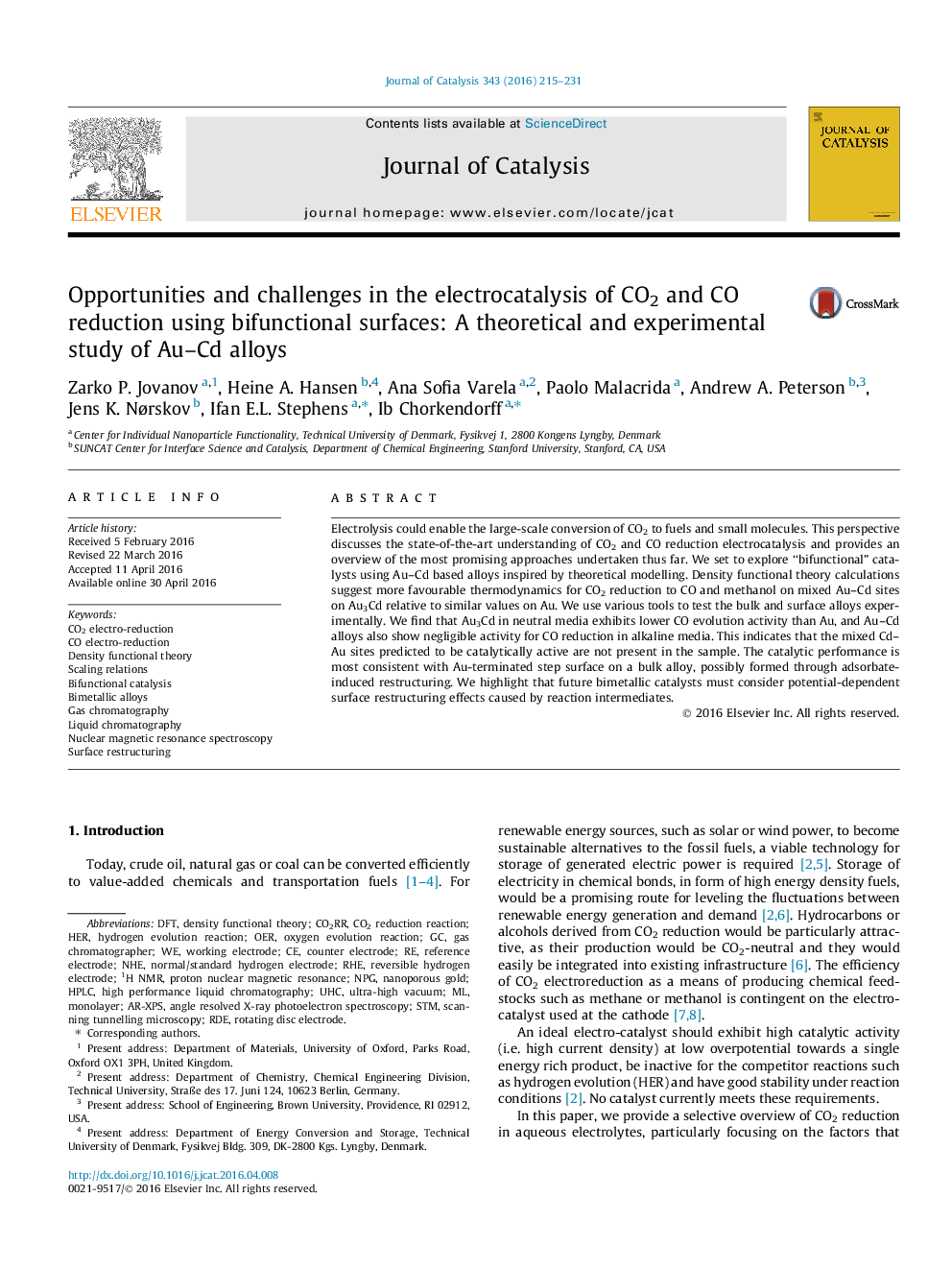| Article ID | Journal | Published Year | Pages | File Type |
|---|---|---|---|---|
| 6455992 | Journal of Catalysis | 2016 | 17 Pages |
â¢Review of current state-of-the-art CO2 reduction catalysis.â¢Theoretical screening study identified Au-Cd as active for CO2 and CO reduction.â¢Experimental activity lower than pure Au.â¢Ideal Au-Cd site absent.
Electrolysis could enable the large-scale conversion of CO2 to fuels and small molecules. This perspective discusses the state-of-the-art understanding of CO2 and CO reduction electrocatalysis and provides an overview of the most promising approaches undertaken thus far. We set to explore “bifunctional” catalysts using Au-Cd based alloys inspired by theoretical modelling. Density functional theory calculations suggest more favourable thermodynamics for CO2 reduction to CO and methanol on mixed Au-Cd sites on Au3Cd relative to similar values on Au. We use various tools to test the bulk and surface alloys experimentally. We find that Au3Cd in neutral media exhibits lower CO evolution activity than Au, and Au-Cd alloys also show negligible activity for CO reduction in alkaline media. This indicates that the mixed Cd-Au sites predicted to be catalytically active are not present in the sample. The catalytic performance is most consistent with Au-terminated step surface on a bulk alloy, possibly formed through adsorbate-induced restructuring. We highlight that future bimetallic catalysts must consider potential-dependent surface restructuring effects caused by reaction intermediates.
Graphical abstractDownload high-res image (167KB)Download full-size image
